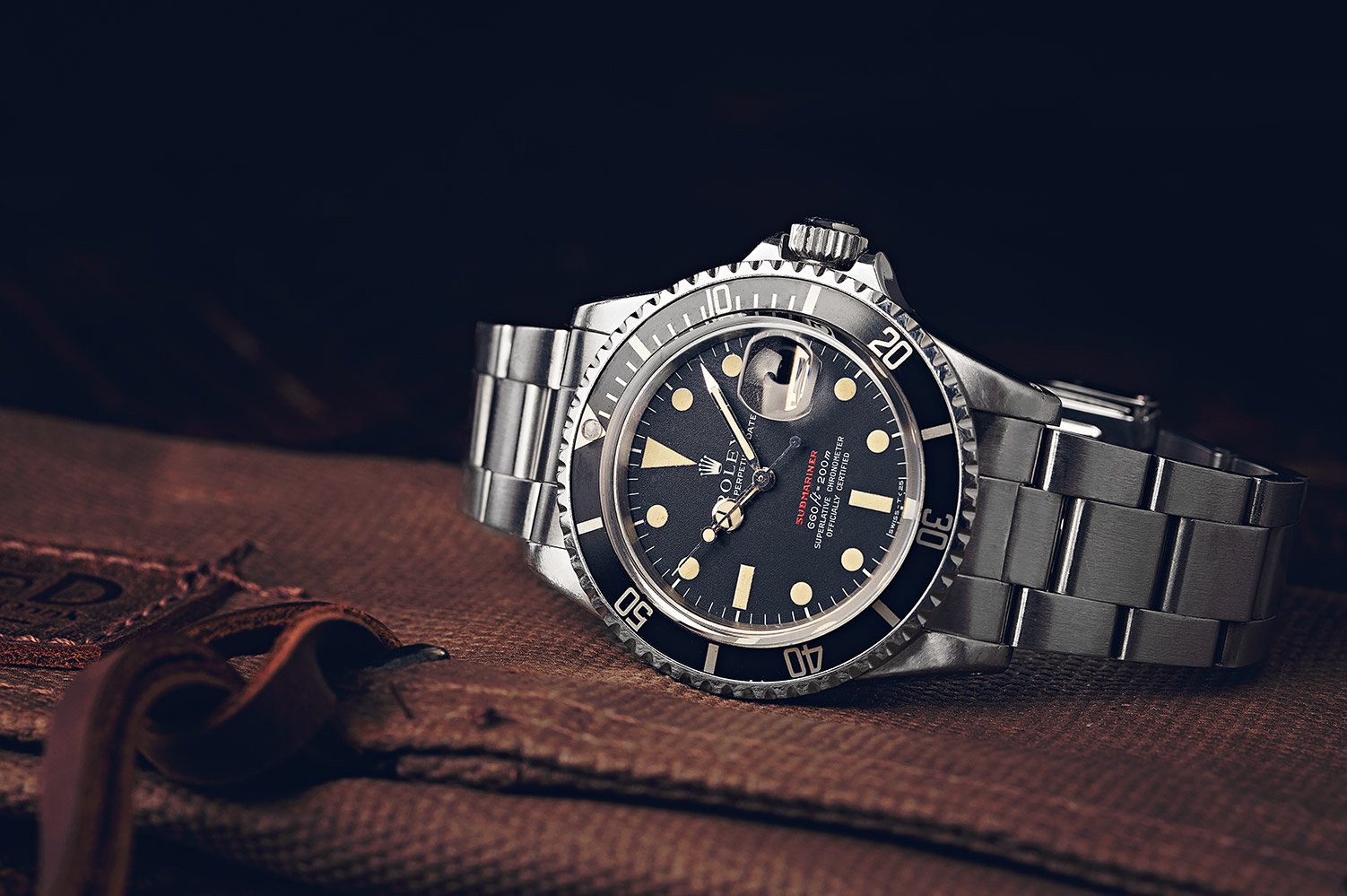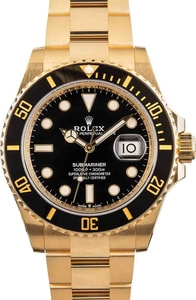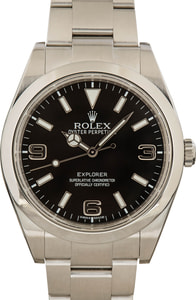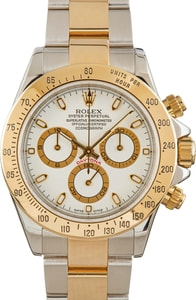Step into the realm of horological mastery, where precision intertwines with opulence, and the artistry of timekeeping comes to life. In this article, we embark on a captivating journey through the world of luxury timepieces, where we draw a captivating comparison between two renowned watchmaking giants: Audemars Piguet watches and the Rolex watch collection. These two iconic brands have etched their names into watchmaking history, each with its own rich heritage, unique design philosophies, and unwavering commitment to craftsmanship.
Whether you’re a seasoned watch enthusiast seeking your next horological masterpiece or someone new to the world of luxury timepieces, we invite you to join us on a journey that explores the essence of Audemars Piguet and Rolex watches. We’ll dissect the intricate details that set them apart, from the materials used in their creations to the technology that powers them, and from the allure of their designs to the experiences they offer their wearers. By the end of this article, you’ll have a deeper understanding of these iconic brands, helping you make an informed choice when it comes to choosing a watch.
History and Heritage
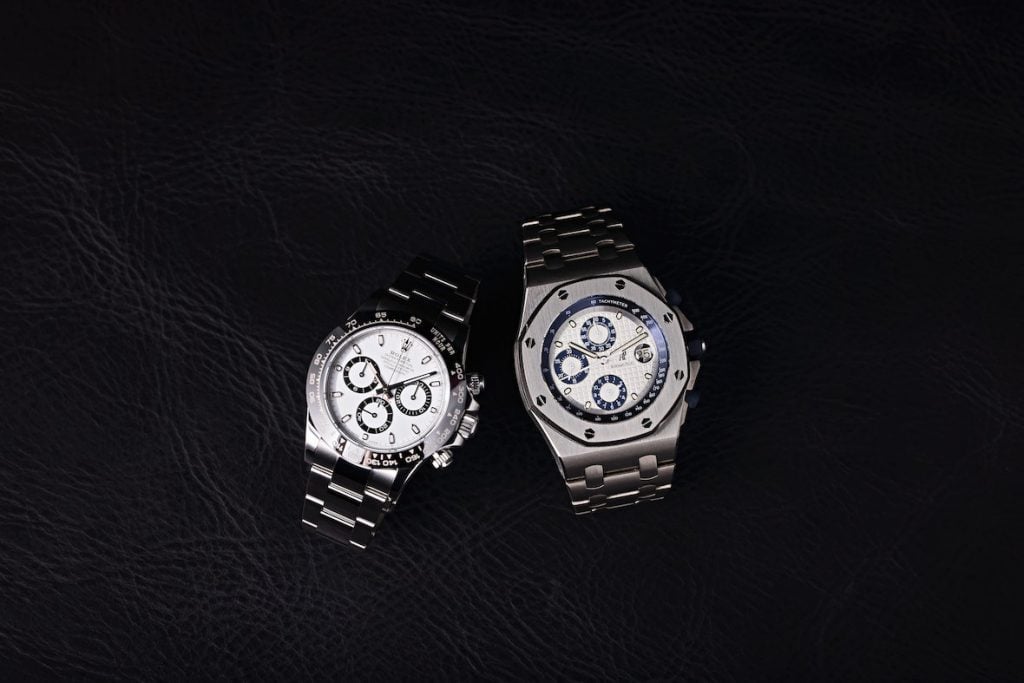
Audemars Piguet
The history of Audemars Piguet and Rolex runs deep, each with a story that resonates through the chronicles of watchmaking history. Audemars Piguet, founded in 1875 in the picturesque Swiss village of Le Brassus, has a heritage steeped in innovation and tradition. It was the audacious spirit of Jules-Louis Audemars and Edward-Auguste Piguet that laid the foundation for a brand known for its avant-garde designs and intricate complications. Notably, Audemars Piguet created the world’s first minute-repeating movement for wristwatches in 1892, a testament to their pioneering spirit.
Rolex
On the other hand, Rolex, born in 1905 in London before relocating to Geneva, Switzerland, is a brand synonymous with precision and reliability. The brainchild of Hans Wilsdorf, Rolex quickly established itself as a trailblazer in wristwatch technology. In 1910, it was the first brand to earn the Swiss Certificate of Chronometric Precision, a certification that would become the hallmark of Rolex’s commitment to accuracy. Rolex’s enduring legacy includes the creation of the world’s first waterproof wristwatch, the Rolex Oyster, in 1926, and the introduction of the iconic Rolex Submariner watch in 1953, which remains a symbol of rugged elegance to this day.
These brands’ histories are woven into the very fabric of horological evolution, with Audemars Piguet known for pushing the boundaries of design and complications, and Rolex celebrated for its unwavering dedication to precision and robustness. As we explore their remarkable journeys through time, we gain a deeper appreciation for the foundations upon which these luxury watchmaking giants were built.
Design and Aesthetics
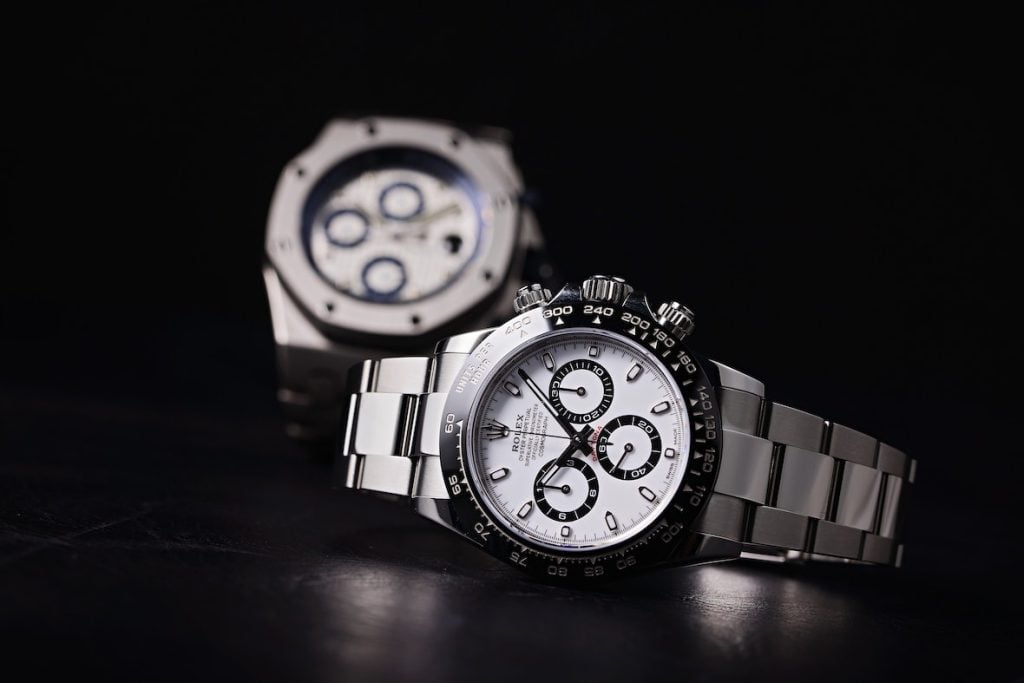
The design ethos of Audemars Piguet and Rolex represents a fascinating dichotomy within the world of luxury watches. Audemars Piguet, often regarded as the avant-garde artist of the watchmaking world, has a penchant for pushing the boundaries of creativity. Their timepieces are a harmonious blend of form and function, often characterized by bold, unconventional designs that challenge conventional norms. The AP Royal Oak, for instance, introduced in 1972, redefined the luxury sports watch with its octagonal bezel and exposed screws, creating an enduring icon of modern watches. Audemars Piguet consistently dazzles watch connoisseurs with daring complications and intricate skeletonized dials, showcasing their commitment to artistic innovation.
In contrast, Rolex adheres to a design philosophy deeply rooted in timeless elegance and enduring simplicity. The hallmark of Rolex watches lies in their understated yet unmistakable aesthetics. Rolex timepieces are renowned for their clean, uncluttered dials, iconic Mercedes hands, and the use of precious metals and high-quality materials that exude a sense of timeless refinement. Whether it’s the classic Rolex Datejust collection or the iconic Submariner, Rolex watches are celebrated for their versatility, equally at home in the boardroom as they are on a deep-sea dive. The brand’s dedication to functional design is epitomized by its patented Cyclops lens, which magnifies the date display for enhanced legibility – a small yet significant detail that exemplifies Rolex’s commitment to the practical needs of its wearers.
In essence, Audemars Piguet and Rolex represent two distinct poles of watch design – the former pushing the boundaries of artistic expression, the latter epitomizing the elegance of enduring classics. As we delve deeper into their design philosophies, it becomes clear that both approaches have found a dedicated following among watch aficionados, each appreciating the unique beauty and character that these iconic brands bring to their wrists.
Materials and Craftsmanship
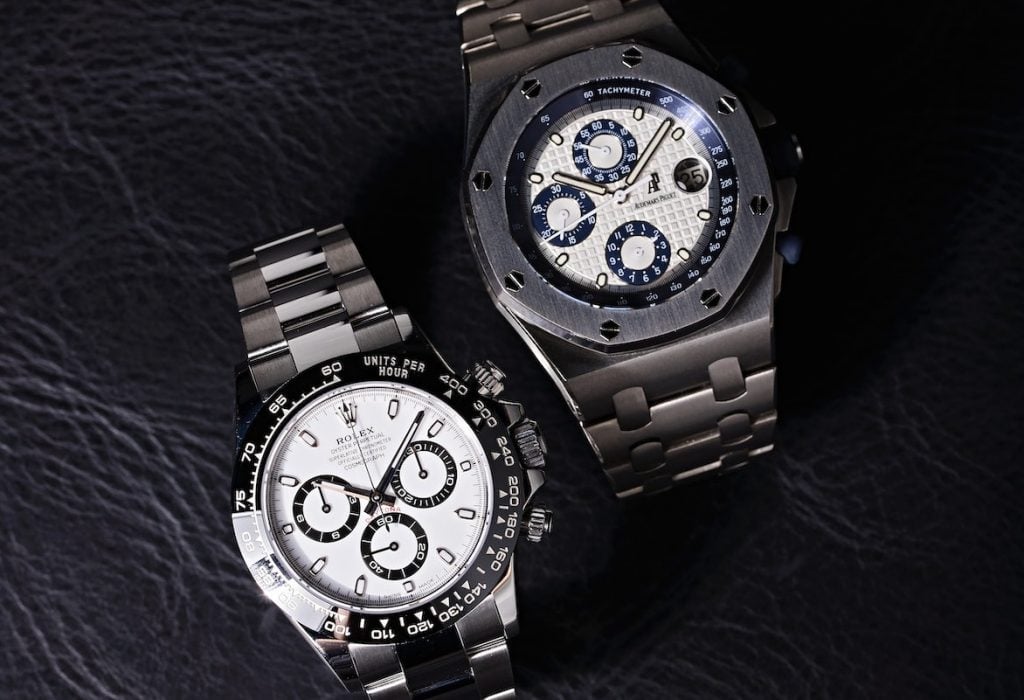
The heart and soul of any luxury timepiece lie in the materials used and the craftsmanship employed in its creation, and both Audemars Piguet and Rolex exemplify excellence in these aspects. Audemars Piguet has a longstanding tradition of sourcing the finest materials, often incorporating rare and exotic elements into their watch designs. Precious metals like platinum and rose gold frequently find their way into Audemars Piguet’s watch collections, elevating both aesthetics and durability. What truly sets Audemars Piguet apart, however, is their expertise in crafting intricate, hand-finished movements, which often feature meticulous details like perlage and Côtes de Genève. The Royal Oak’s distinctive “tapisserie” dial, with its intricate textured pattern, reflects the brand’s commitment to both form and function.
Rolex, on the other hand, is renowned for its unwavering commitment to quality and durability. The brand’s signature material, 904L stainless steel, is not only corrosion-resistant but also incredibly robust, ensuring that a Rolex watch can withstand the test of time. Rolex’s relentless pursuit of perfection extends to their in-house manufacturing of virtually every component, from the case to the movement. Their proprietary alloy, Rolesor, combines the strength of steel with the luxury of gold, creating a unique material that graces many Rolex models. The craftsmanship applied to Rolex movements is equally impressive, with each one meticulously assembled and tested by skilled watchmakers to meet the brand’s stringent standards for precision and reliability.
In essence, Audemars Piguet and Rolex take distinct approaches to materials and craftsmanship, with Audemars Piguet’s penchant for exotic materials and intricate movement finishes, and Rolex’s dedication to durability and precision. These distinctions reflect the diverse preferences of discerning watch enthusiasts, offering a choice between artistic ingenuity and steadfast functionality, both wrapped in the allure of exceptional craftsmanship.
Movements and Technology
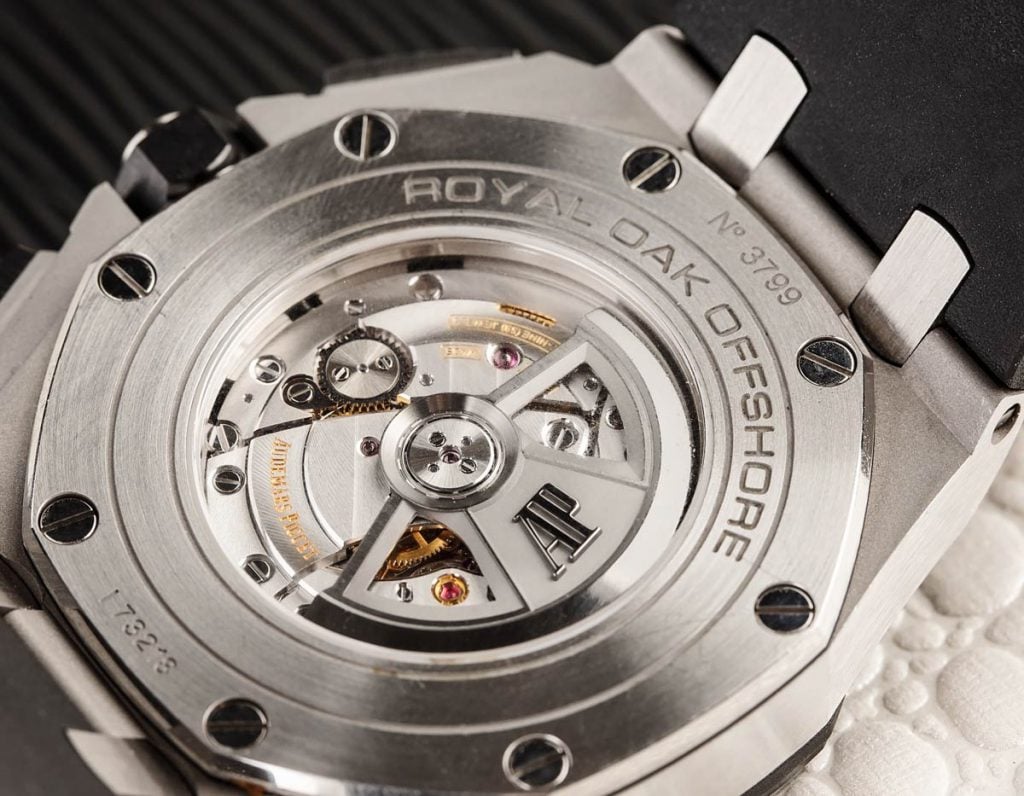

The beating heart of any wristwatch is its movement, and when it comes to Audemars Piguet and Rolex, the artistry beneath the dial is nothing short of remarkable. Audemars Piguet has earned its reputation as a pioneer in horological innovation, consistently pushing the boundaries of movement design and technology. The brand’s Royal Oak Concept watches, for instance, showcase avant-garde engineering with tourbillons, minute repeaters, and even supersonic chronographs. Audemars Piguet’s in-house movements are often hand-finished to perfection, marrying traditional craftsmanship with cutting-edge complications. It’s a testament to their commitment to not only telling time but also creating timekeeping masterpieces that astonish.
Rolex, conversely, takes a different approach by focusing on simplicity and precision. The majority of Rolex movements are mechanical, automatic calibers renowned for their robustness and accuracy. While Rolex’s movements may not feature the same level of intricate complications as some of their counterparts, they excel in reliability. Rolex’s Parachrom hairspring, for instance, is resistant to magnetic fields and temperature fluctuations, ensuring unparalleled precision even in adverse conditions. Rolex also pioneered the self-winding mechanism with the Perpetual rotor, a testament to their relentless pursuit of watchmaking excellence.
In essence, Audemars Piguet and Rolex represent two distinct facets of watchmaking technology: Audemars Piguet’s daring innovations in complications and movement design versus Rolex’s dedication to precision, reliability, and enduring simplicity. Whether one is drawn to the complexity of Audemars Piguet’s horological marvels or the reliability of Rolex’s timeless movements, both brands offer a captivating glimpse into the world of mechanical watchmaking at its finest.
Pricing and Value
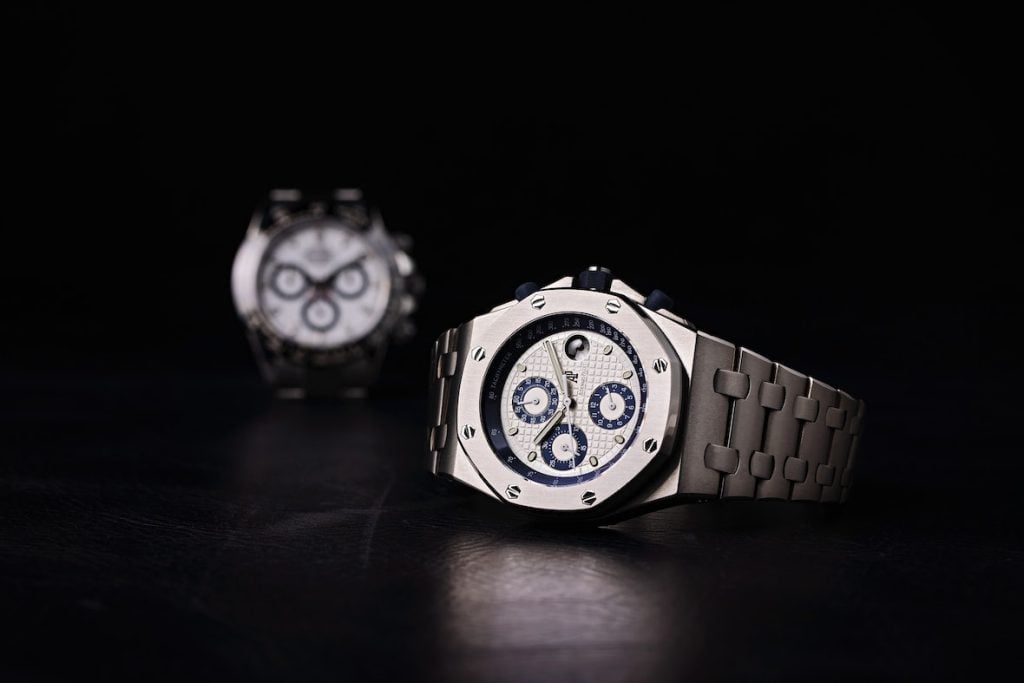
When considering the investment in a luxury timepiece, one cannot overlook the intriguing dynamics of pricing and value associated with Audemars Piguet and Rolex. Audemars Piguet, known for its pioneering spirit and artistic complexity, often commands a premium price range. Their limited-edition models, intricate complications, and use of precious materials contribute to their exclusivity and higher price tags. Audemars Piguet watches tend to be valued not only for their intrinsic worth but also for their rarity, making them coveted collector’s items.
In contrast, Rolex, while certainly a luxury brand, has a reputation for delivering strong value retention over time. Rolex watches typically occupy a more diverse pricing spectrum, with entry-level models accessible to a broader audience. The enduring demand for Rolex, coupled with its reputation for precision and durability, often results in their watches maintaining or appreciating in value. Vintage Rolex watches have become prized assets, with some models fetching astronomical prices at auctions. Owning a Rolex watch is not just about luxury; it’s often viewed as a sound investment.
Ultimately, the choice between Audemars Piguet and Rolex comes down to personal preferences and priorities. Audemars Piguet offers exclusivity and intricate artistry that can appreciate in value over time, while Rolex provides a diverse range of models that balance luxury with the potential for long-term value retention. Both brands, however, share a commitment to delivering exceptional craftsmanship and timeless appeal, ensuring that the allure of owning one of their timepieces goes far beyond mere monetary considerations.
Availability and Collectibility
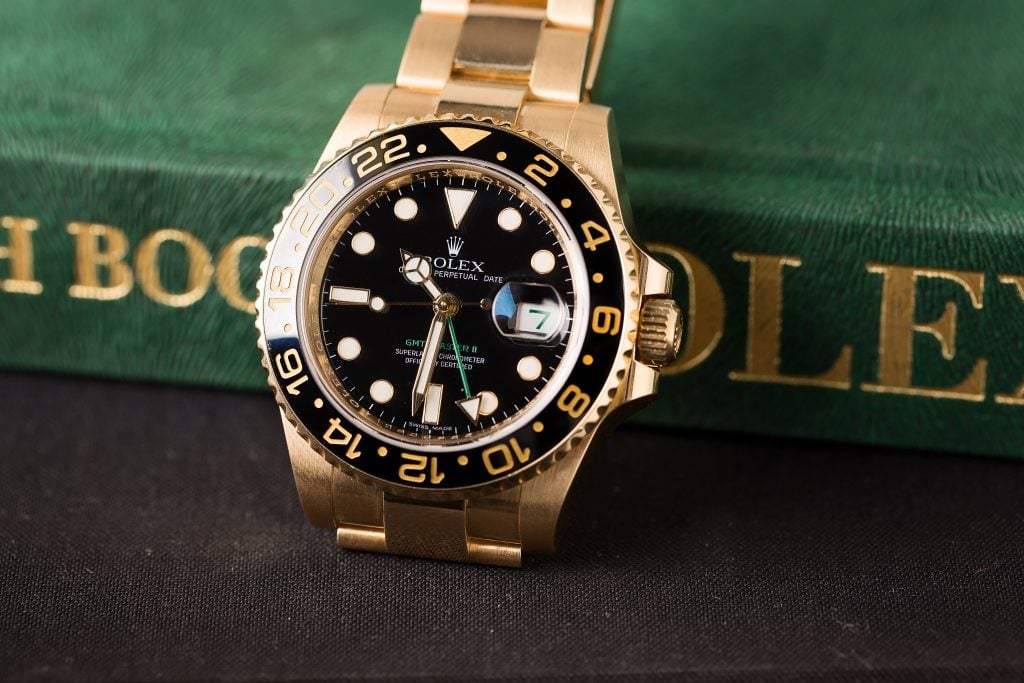
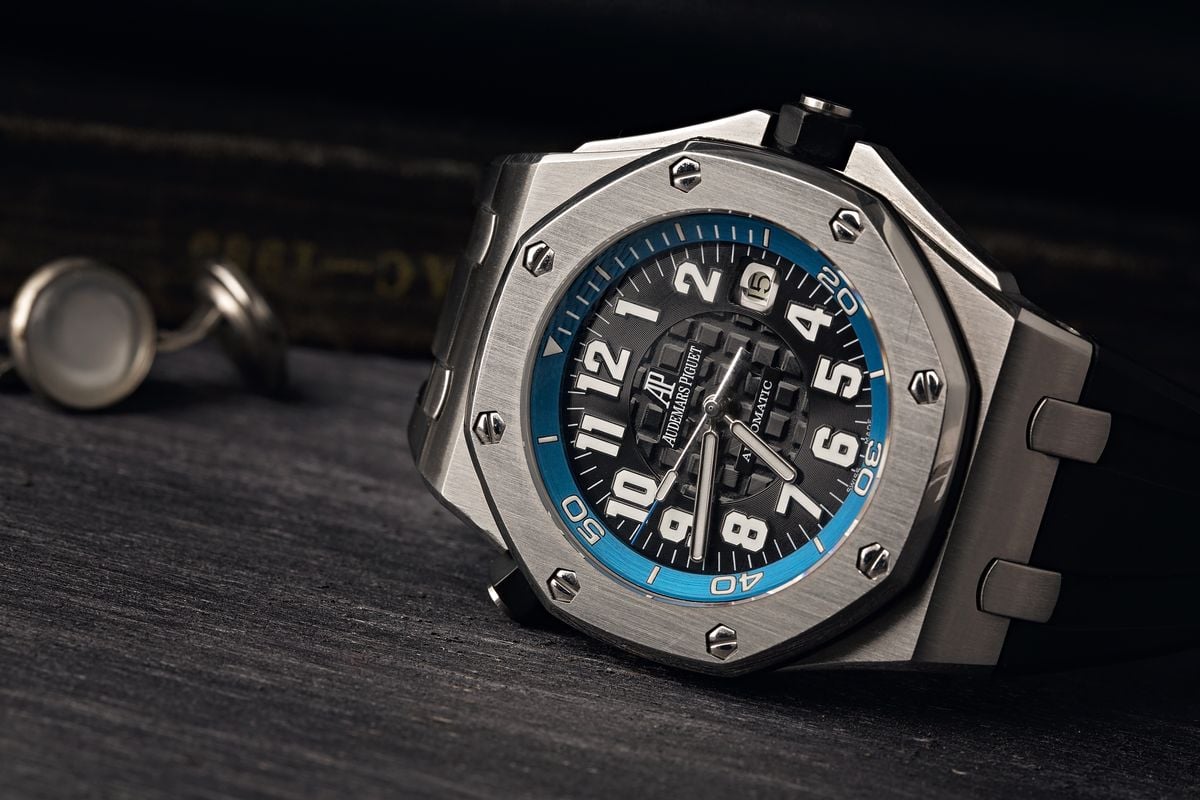
When it comes to the world of luxury watches, availability and collectability play a significant role in the allure of Audemars Piguet and Rolex. Audemars Piguet often embraces a strategy of limited production, creating a sense of exclusivity around their timepieces. This limited availability can make owning an Audemars Piguet a coveted achievement, and some of their rare, limited-edition models have become highly sought-after collector’s items. The brand’s commitment to preserving their heritage also extends to maintaining the rarity of certain vintage pieces, contributing to their collectibility.
Rolex, while also crafting exclusive models, often maintains a more consistent supply of their watches. This accessibility has made Rolex a household name, with a wide range of models available to suit various tastes and lifestyles. Yet, within this accessibility lies the intrigue of collectability. Rolex has its own world of collectible timepieces, with vintage models, discontinued references, and limited editions often commanding attention from enthusiasts and collectors alike. The enduring demand for Rolex watches adds a layer of collectability, as certain models can become increasingly scarce on the market, driving up their value over time.
In essence, Audemars Piguet and Rolex offer different dimensions of availability and collectibility. Audemars Piguet thrives on limited availability and exclusive releases, while Rolex’s broader range of models provides accessibility and the potential for future collectability. Both brands, however, share the allure of owning a piece of watchmaking history, whether it’s a rare Audemar Piguet gem or a timeless Rolex classic.
Brand Recognition and Status
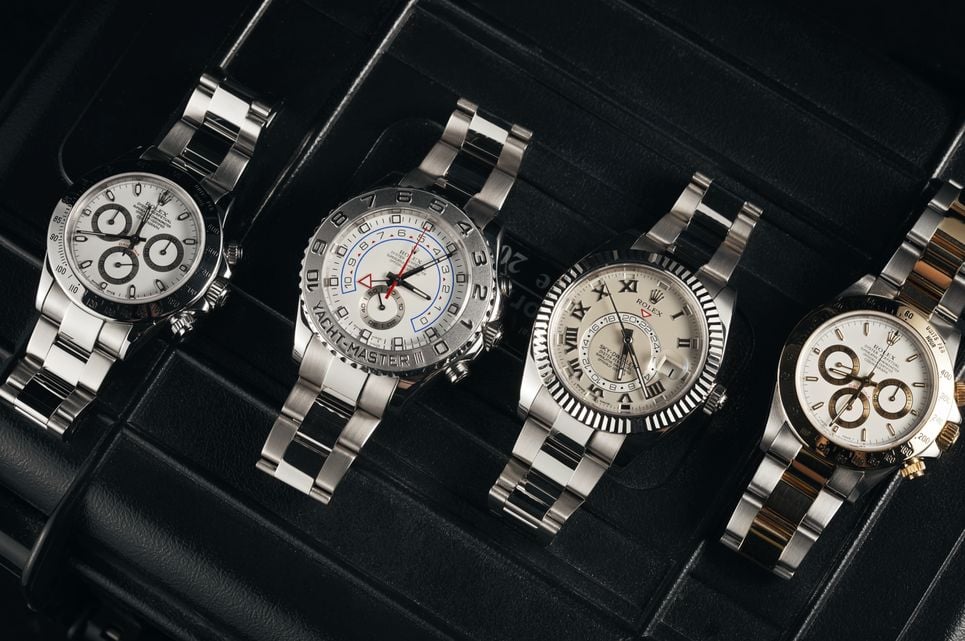
In the world of luxury timepieces, brand recognition and status carry a weight of their own, and Audemars Piguet and Rolex have both achieved iconic status in their unique ways. Audemars Piguet, with its legacy of pushing the boundaries of watchmaking, commands the admiration of horological connoisseurs who appreciate innovation and artistry. Audemar Piguet’s collaborations with renowned artists and celebrities, such as Jay-Z and LeBron James, have cemented its place as a symbol of creativity and exclusivity. Owning an Audemars Piguet watch is akin to possessing a piece of living history, a testament to one’s appreciation for the art of watchmaking.
Rolex, on the other hand, stands as a beacon of timeless elegance and unwavering precision. Its iconic crown logo is instantly recognizable, a symbol of achievement and success. Rolex watches have adorned the wrists of explorers, athletes, and world leaders, adding a layer of historical significance to the brand. The Rolex name carries with it a reputation for reliability and prestige, making it a status symbol in various circles. Whether worn in the boardroom or on a mountaineering expedition, a Rolex watch communicates not only a sense of style but also a statement of accomplishment.
Audemars Piguet and Rolex have carved unique niches in the world of luxury watches. Audemars Piguet represents artistic innovation and exclusivity, while Rolex epitomizes enduring elegance and prestige. Both brands, however, share the common thread of being symbols of status and recognition, serving as a testament to the wearer’s appreciation for craftsmanship and the finer things in life.
Our Thoughts on Rolex & Audemars Piguet
In conclusion, the comparison between Audemars Piguet and Rolex reveals the captivating diversity within the realm of luxury watches. Audemars Piguet, with its avant-garde designs, intricate complications, and limited editions, stands as a testament to artistic innovation and exclusivity. Rolex, on the other hand, epitomizes timeless elegance, precision, and reliability, holding a unique position as a symbol of achievement and success. Both brands share an unwavering commitment to craftsmanship and quality, each with its own distinct approach.
Ultimately, the choice between Audemars Piguet and Rolex is a deeply personal one, reflecting individual tastes, values, and lifestyles. Whether you are drawn to Audemars Piguet’s artistic marvels or Rolex’s enduring classics, both brands offer a remarkable journey through the world of luxury watchmaking. Whichever path you choose, the ownership of an Audemars Piguet or Rolex watch transcends mere timekeeping – it becomes a cherished symbol of your appreciation for horological excellence and the enduring allure of masterfully crafted timepieces.



